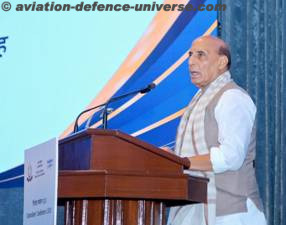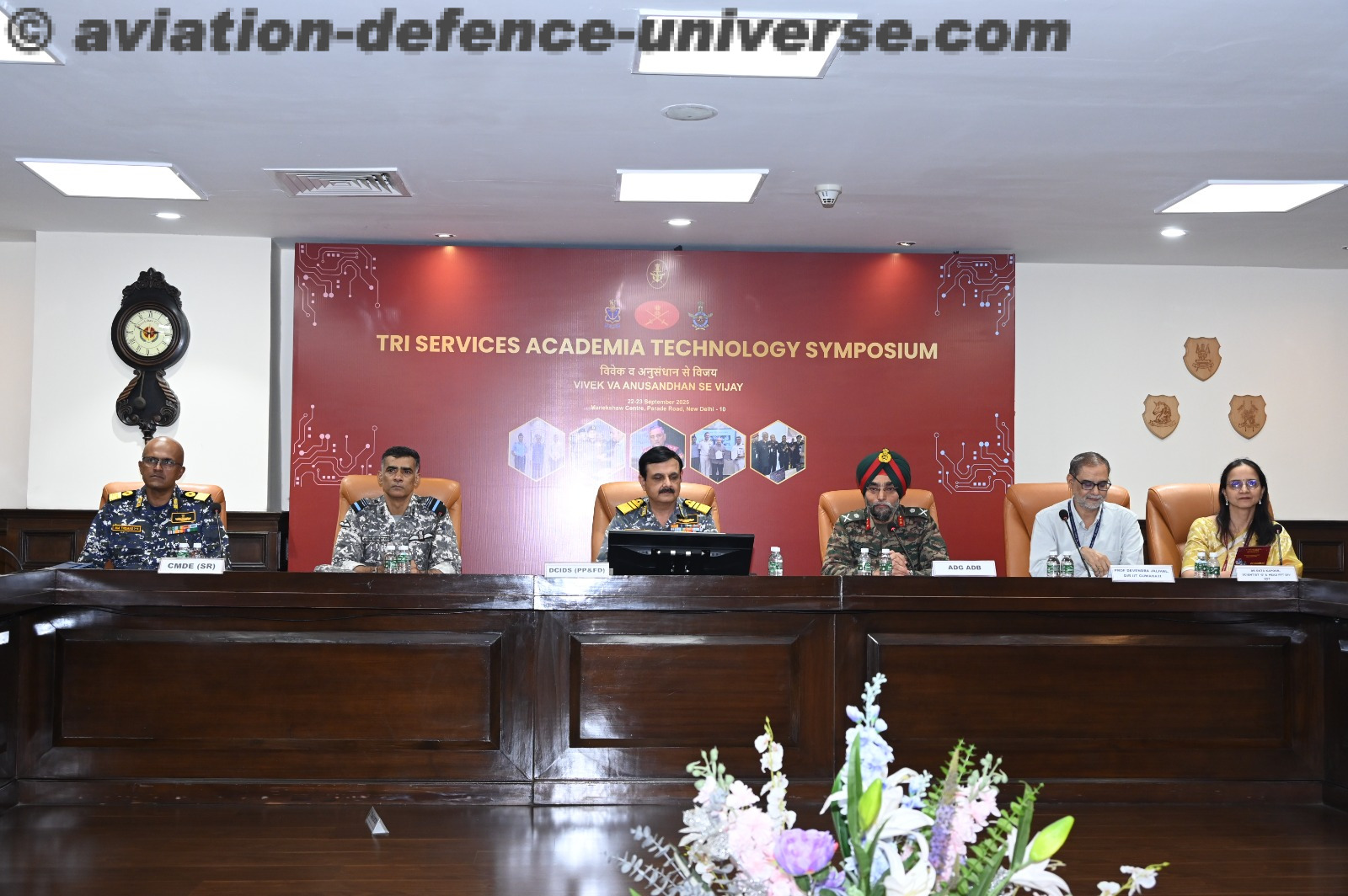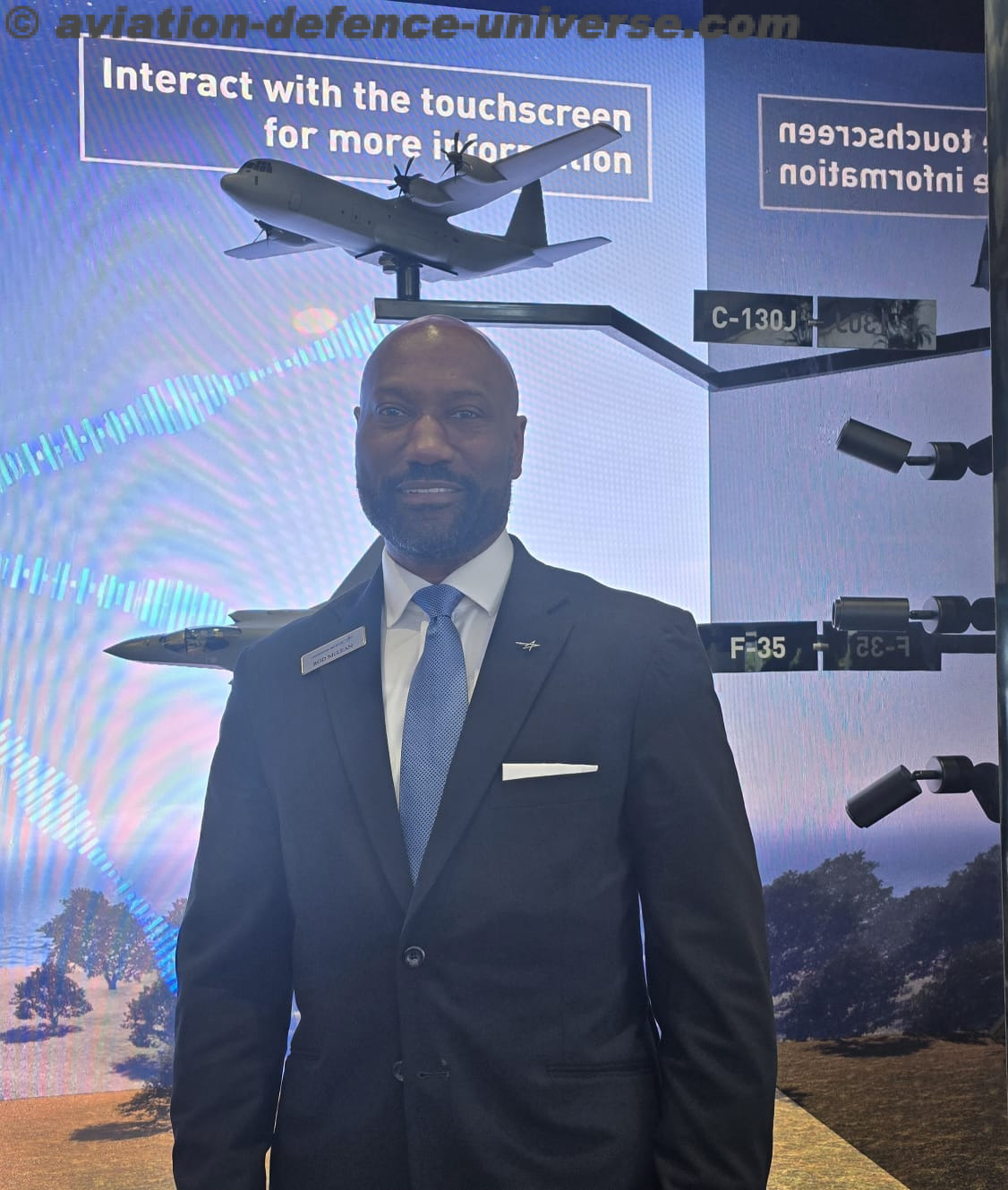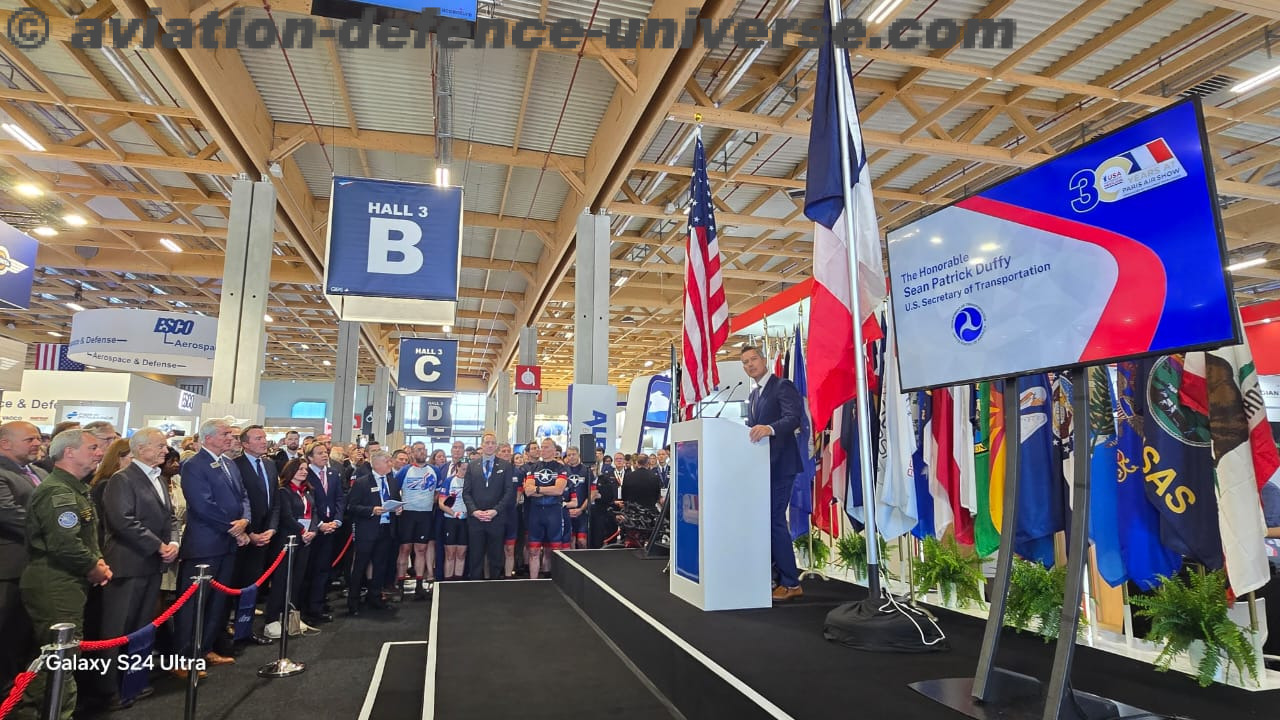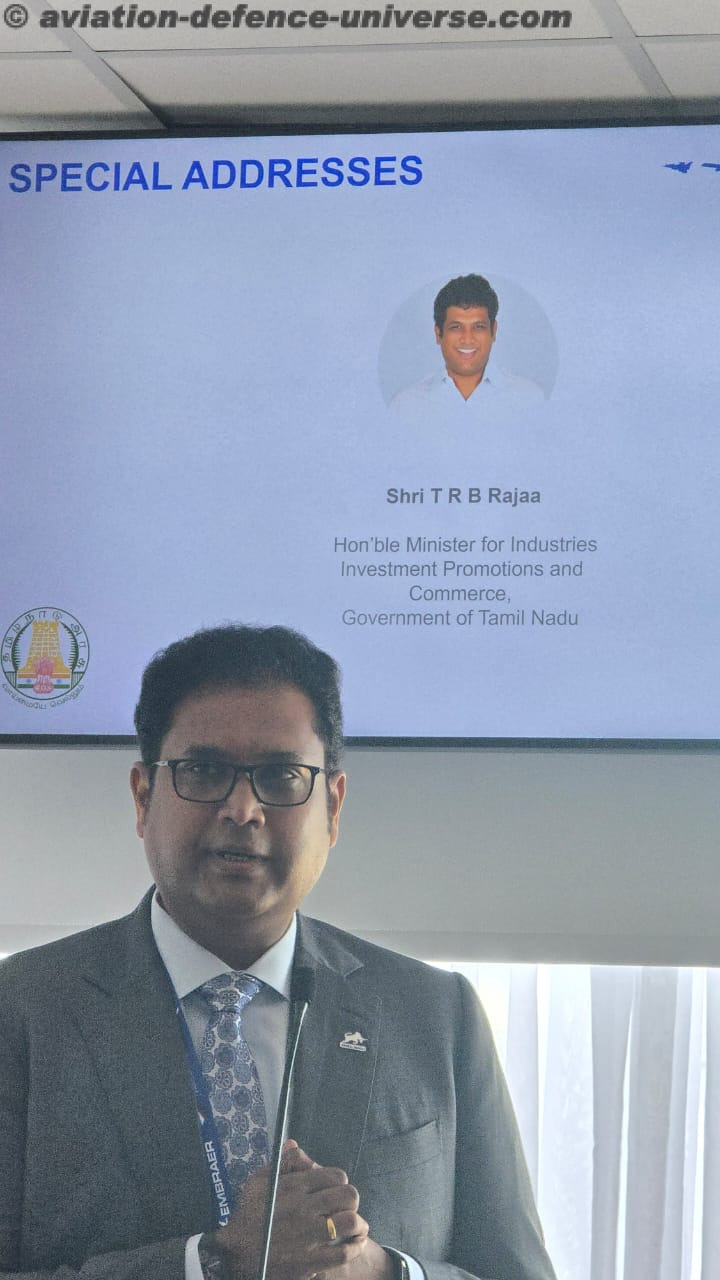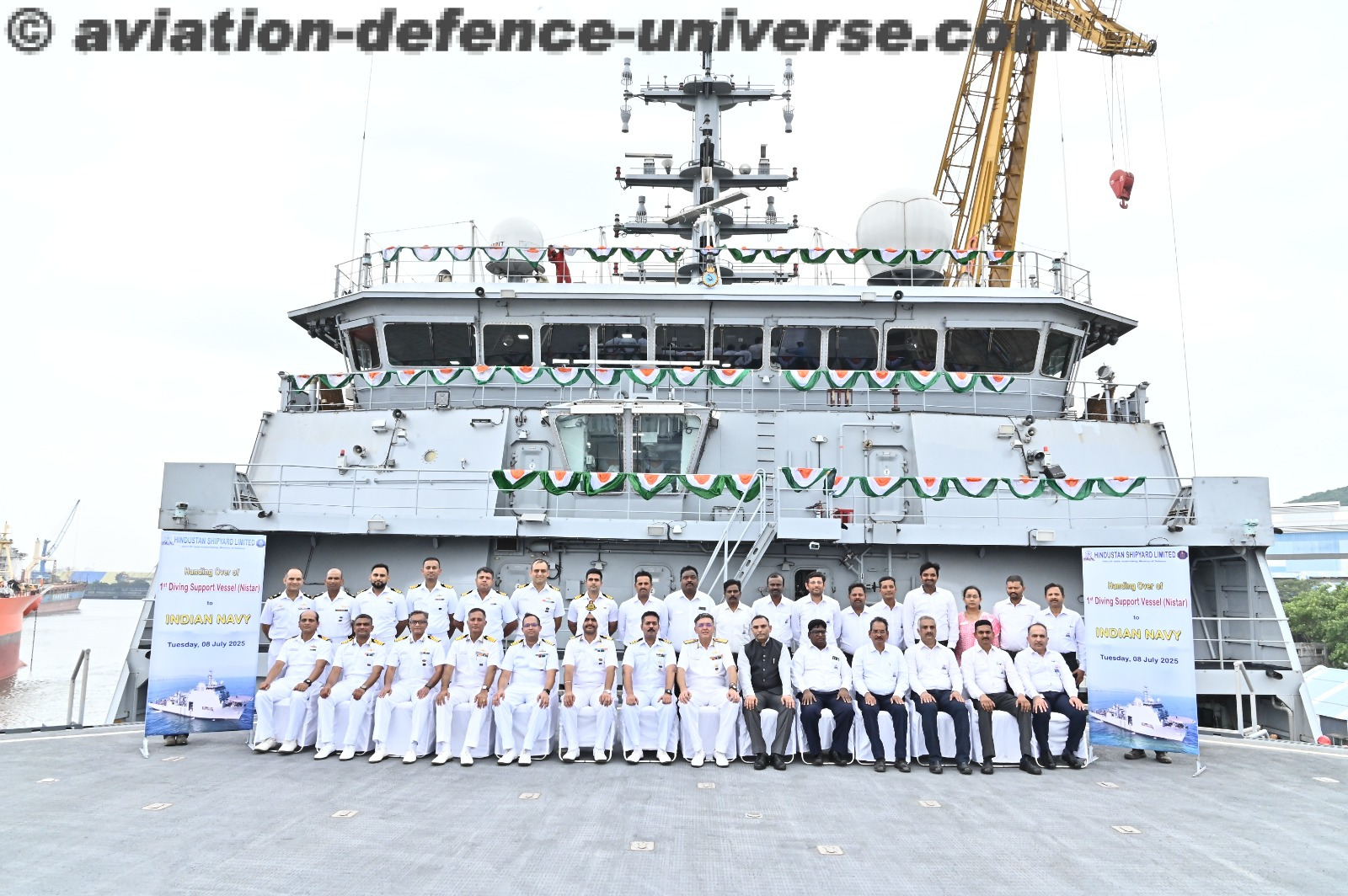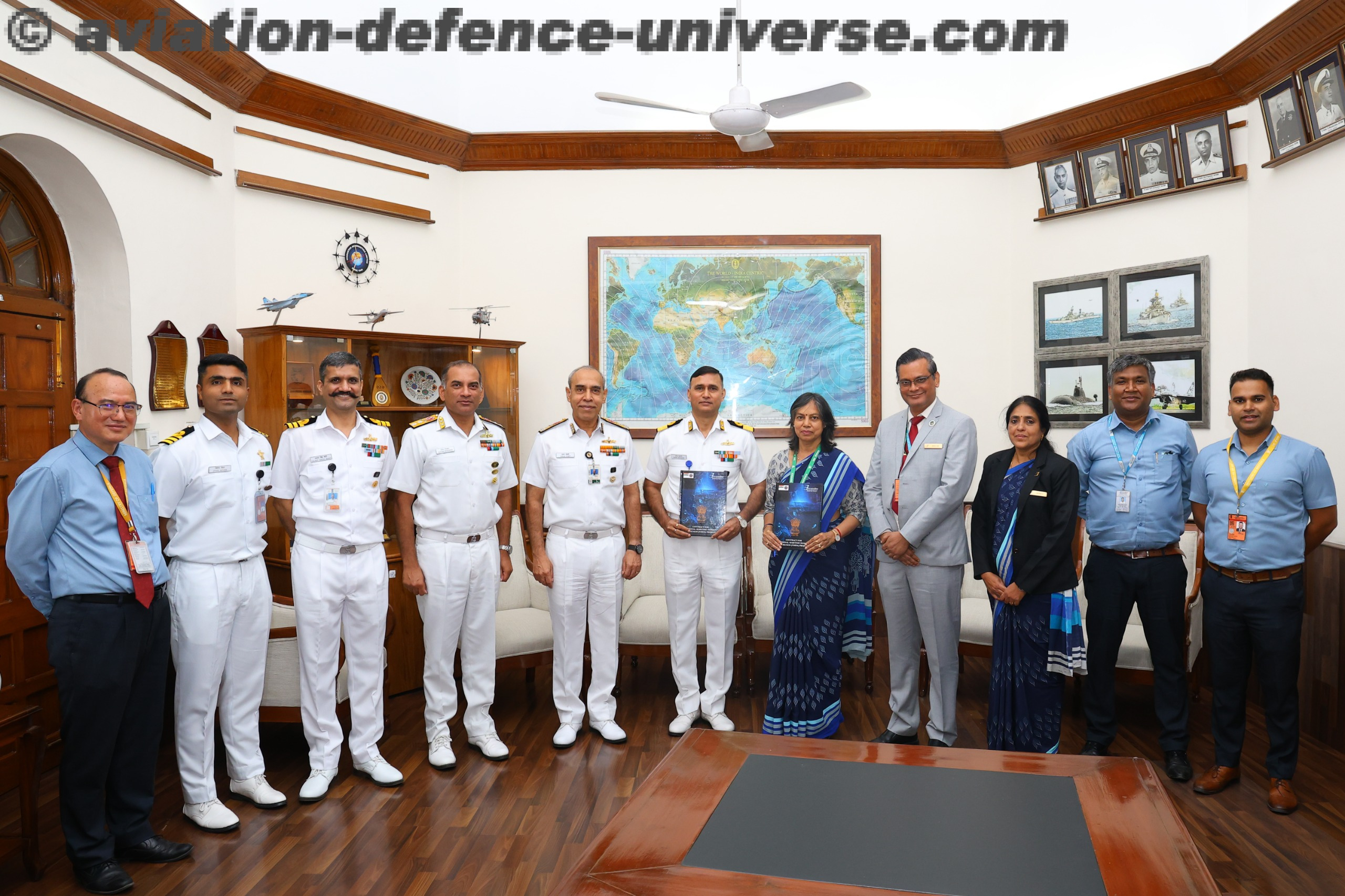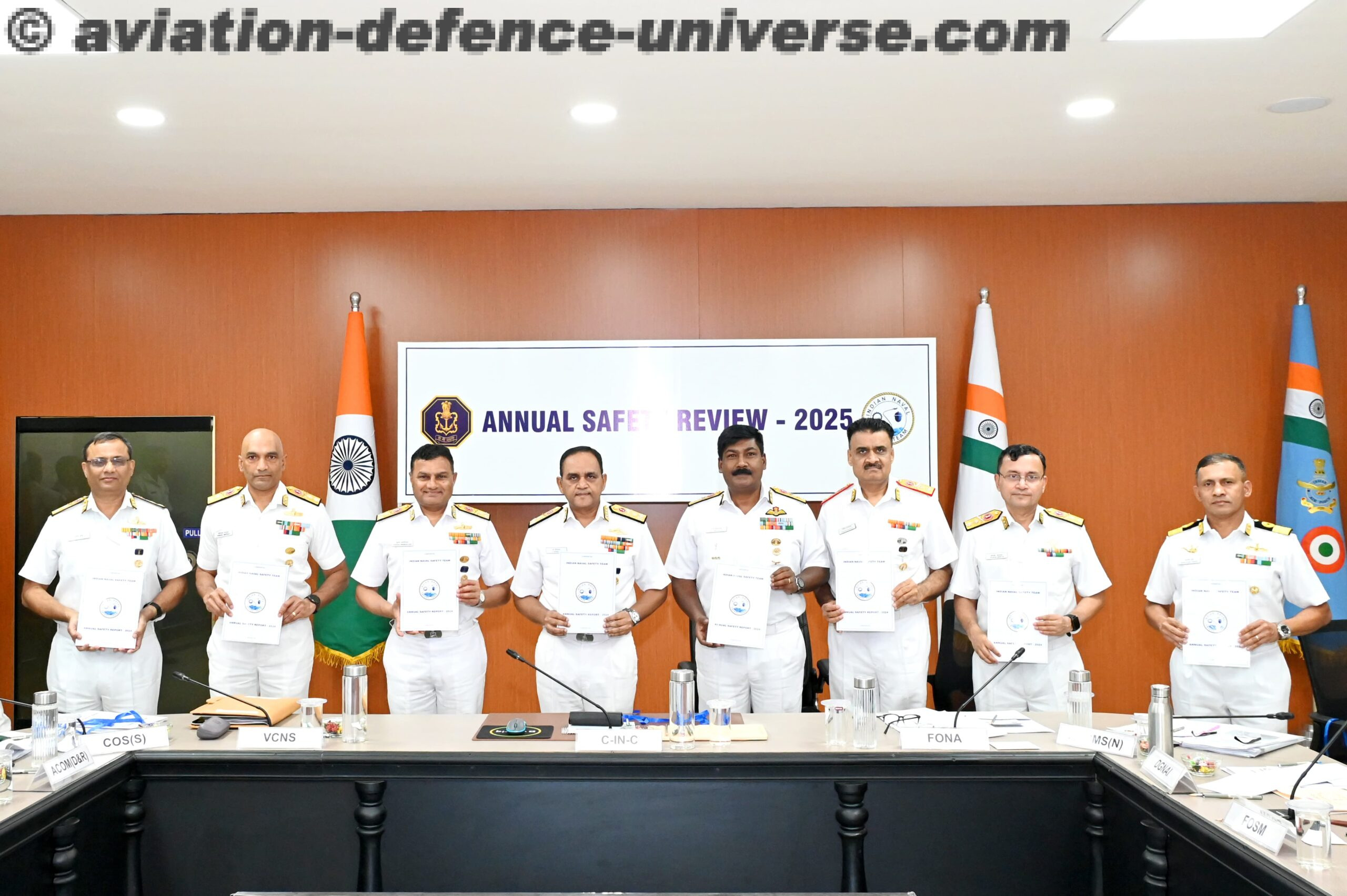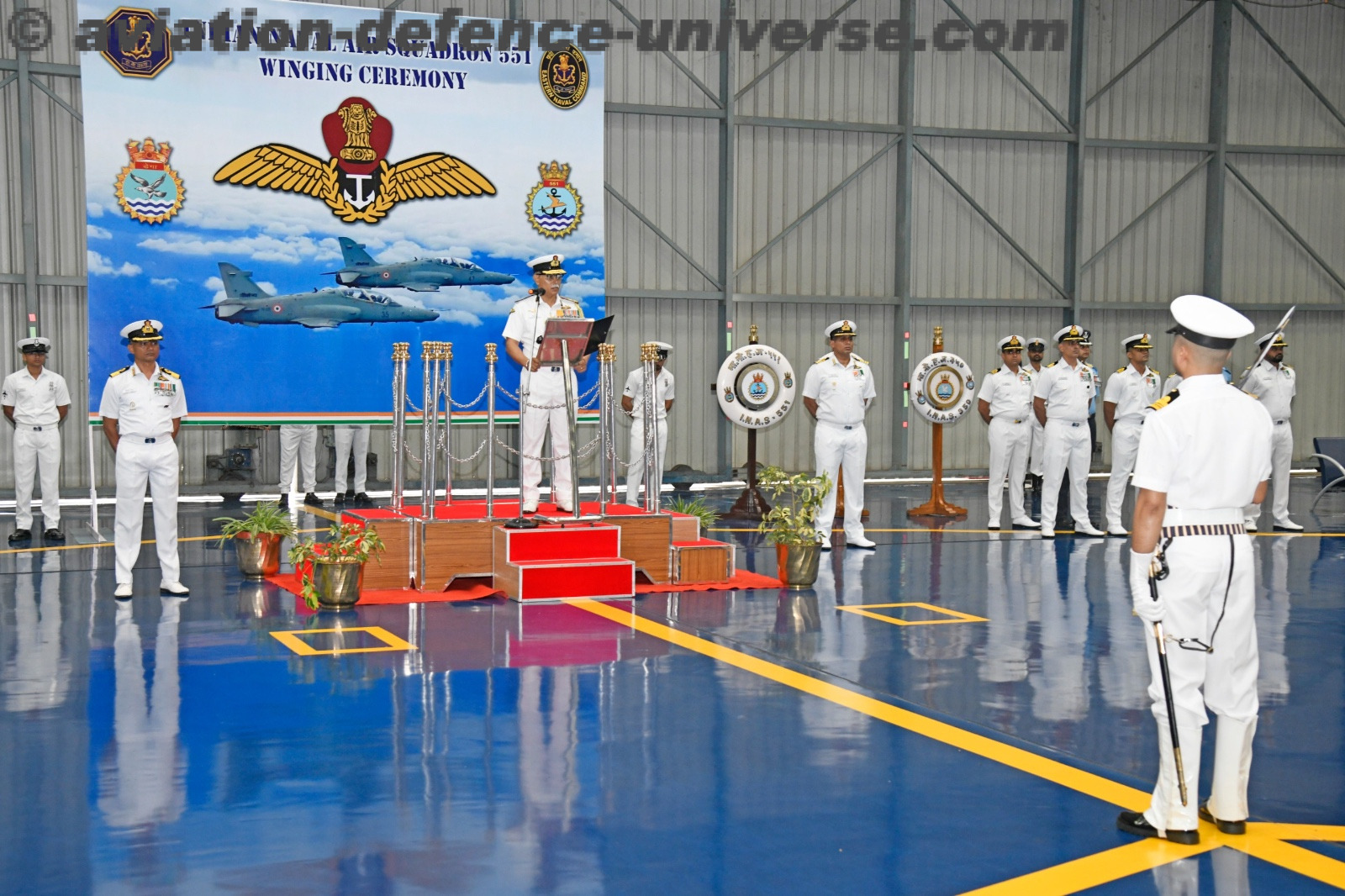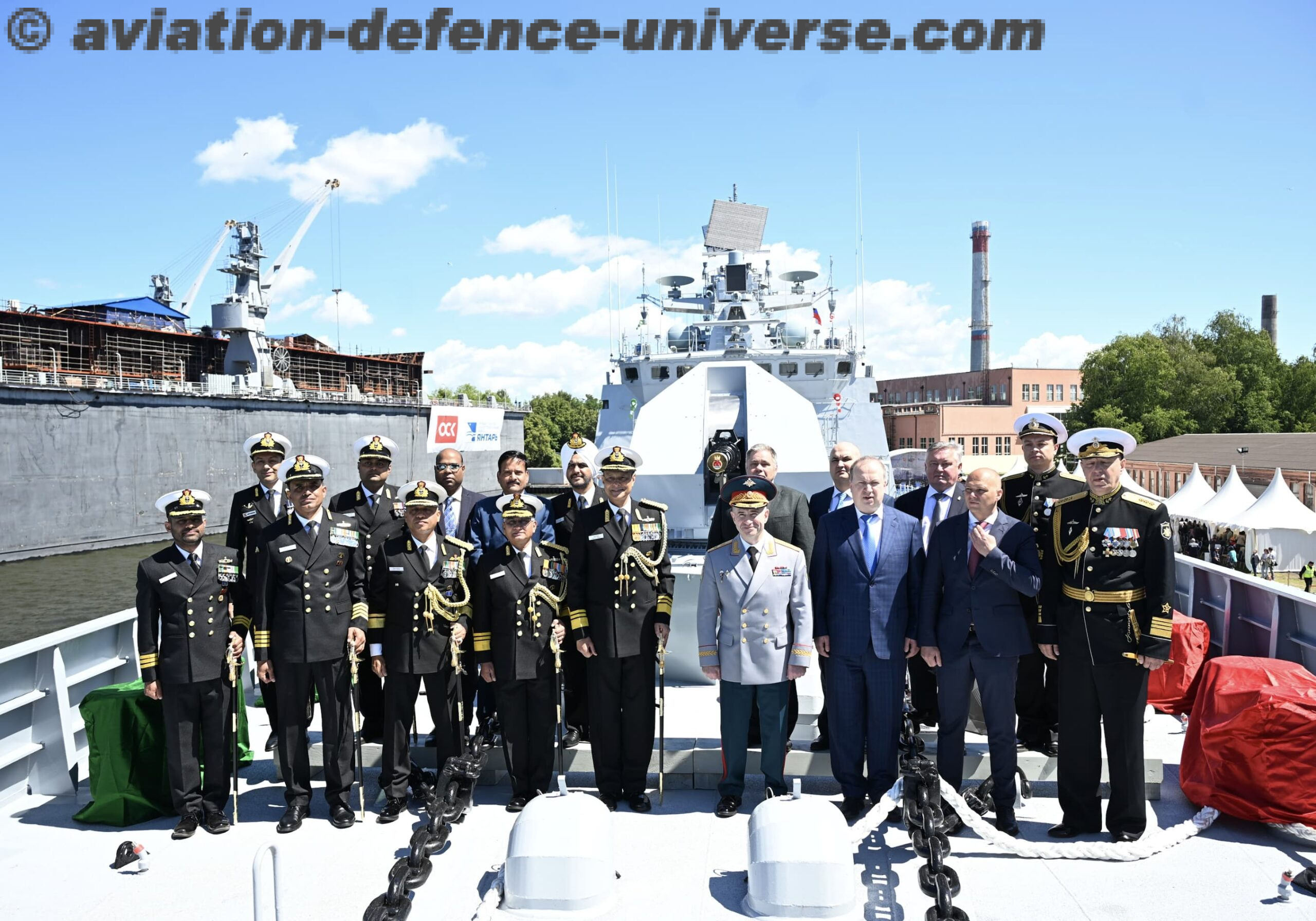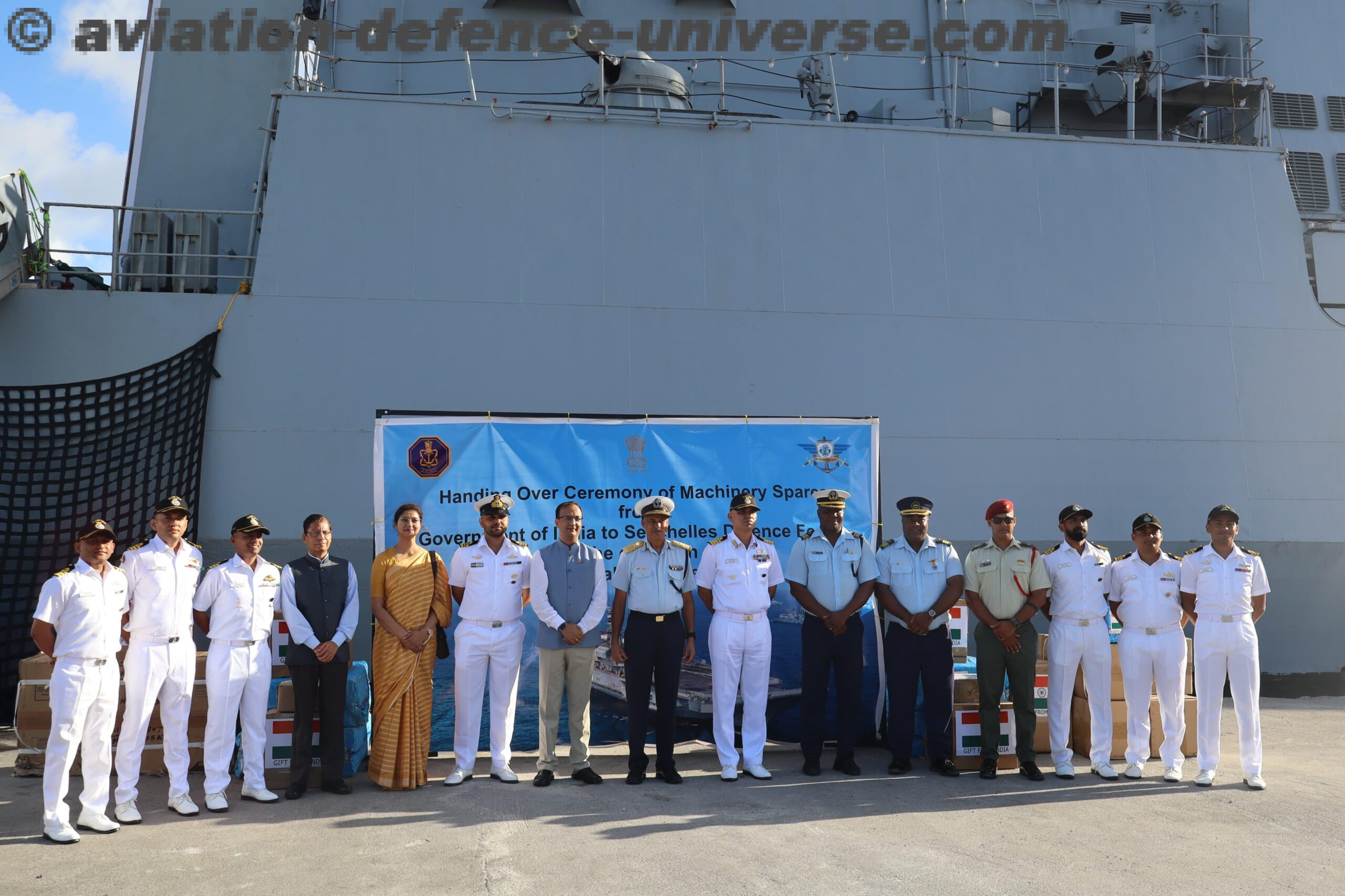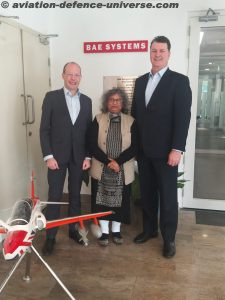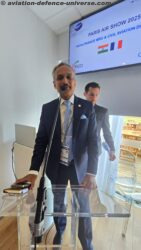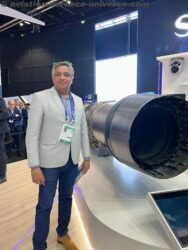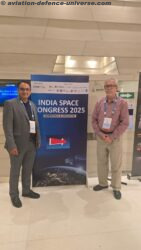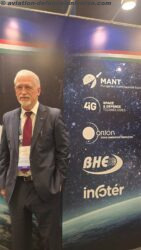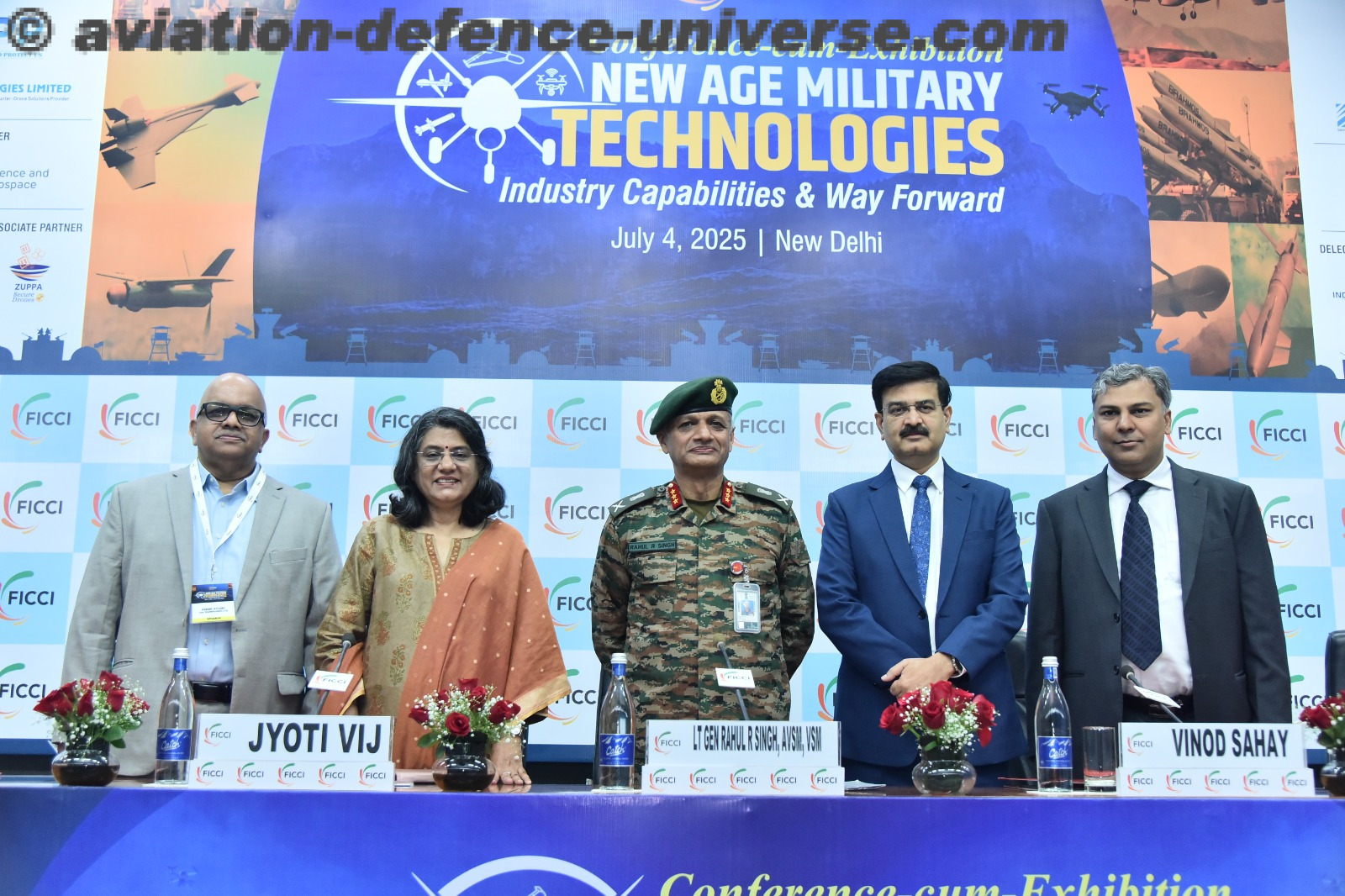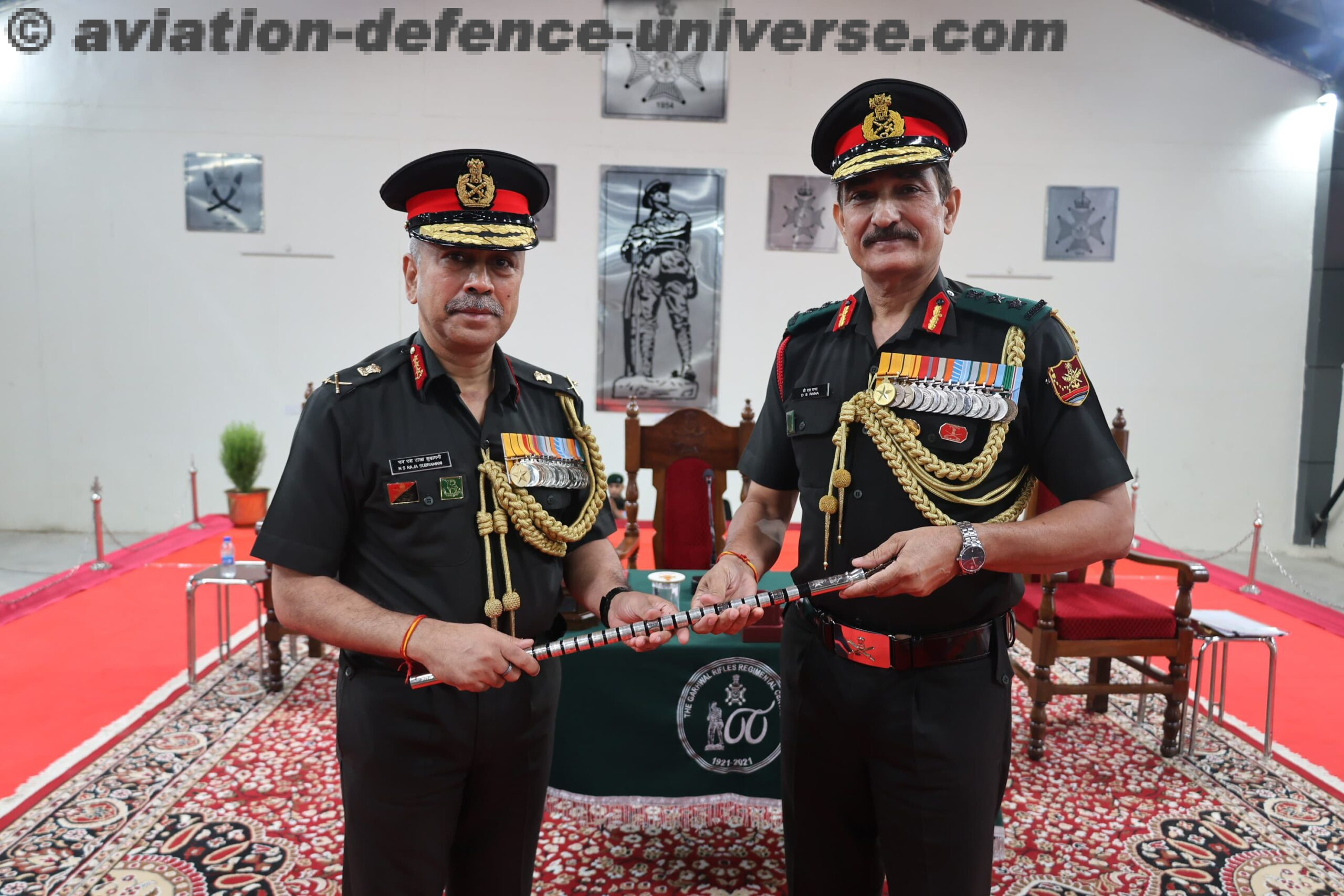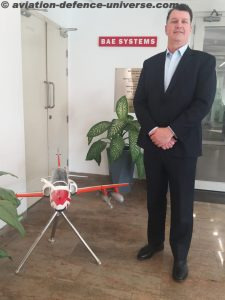
New Delhi. 01 March 2024. “BAE Systems in partnership with L&T is offering the Indian Army all-terrain vehicle BvS 10 and has completed all of the trial. We will make 18 vehicles, if we’re successful in winning the competition. All 18 will be made in India at L&T facility,” informed Adam Watson, Managing Director, BAE Systems India in an exclusive interview to Aviation & Defence Universe (ADU) recently.
ADU. Congratulations on taking over as BAE’s India Managing Director. How does it feel to be heading the Indian BAE systems?
AW. Well firstly, it is a great privilege and for me personally, I feel quite blessed to be in India and to have this job. What I have learnt about BAE systems in India is that we have a very long history, an established history. It goes back some 70 years and 18 products which is a legacy worth building on. And six of those platforms remain in service today with various branches of the Defence Forces.
So, for me to come into that, I have a sense of awe because I have been trusted to take this business and look to the future and how do we operate here in India going forward. So, on a personal note, India is an incredible place, it is nothing short of magical and for me, being in that environment, learning about the history of India from the great civilisation, one of the five great civilisations of the ancient world through to today, putting a spaceship on the moon, it is just incredible and also the future, the projections about India, the economy, the technology, it just feels like an incredible time to be in India today, right now.
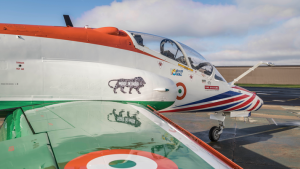 ADU. BAE has always given India a lot of systems and platforms. What is in the pipeline for the near future? Seems like a little lull since last procurement.
ADU. BAE has always given India a lot of systems and platforms. What is in the pipeline for the near future? Seems like a little lull since last procurement.
AW. BAE Systems is known for land systems, for military aerospace, for surface ships, submarines, satellites and cyber. So, we are one of those companies which is multi pronged and is a great mix. Globally, we are in all five domains. And here in India, – I think we were probably most known for fast jets, the Jaguar and the Hawk. Land systems as well, not just the M777 but also artillery pieces out of Sweden, which have been refurbished and still remain in service today.
And of course, close in air support weapons. Looking to the situation today we’re focused on delivering the howitzers, but also, we need to consider what the Indian customer is asking for. As a former Army officer, a long time ago now, over 15 years ago, I guess my interests and my priorities lie with what the warfighter wants and what the warfighter is asking for. We have products and services which are in demand all over the planet. And now my task is to match our products and services with the wants and needs of the Indian Armed Forces.
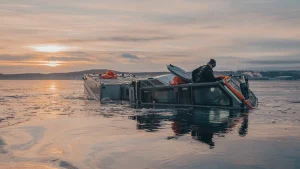
ADU. What is the status of BAE Systems’s partnership with L&T?
AW. The thing that we are working on today, which I think is quite exciting, is in partnership with L&T. The Army has a requirement for all-terrain vehicles for which we are offering the BvS 10. As of now, we have completed trials with the Indian Army.
So there was the field trial test, the second part of the trials the maintenance evaluation, where we provide the documentation and so forth, and we have completed that as well. So that’s where we’re at. We are delighted with the performance of our vehicle, and we’re also delighted with L&T’s lead on the program, because they are leading it. The acquisition is for 18 vehicles, if we’re successful.
ADU. If you win the competition, how many off the shelf and how many under Make in India?
AW. All will be made by L&T in India.
ADU. In that case how do you plan the training programme for L&T skilled workers and officials supervising the project?
AW. We’ll see technicians from perhaps L&T go into Sweden and learn how to work with the vehicle, then bring the transfer of the technology here. BAE Systems might also get their experts stationed here for constant training and supervision. It will be a decision to be taken by the two OEMs when the time comes.
ADU. What is BAE Systems’s mantra going to be for this Make in India project?
AW. Our mantra will be the co-development, co-production and the development side of it and that has already happened to an extent, where L&T have modified the engine, hydraulics, communication systems, and done that kind of indigenisation for the vehicle, such that it can operate at altitude and in the terrain that the Indian Army wants it to. The vehicle is out of the stable of BAE Systems in Sweden. So, it’s a proven vehicle that’s in service in a number of countries and with the Royal Marines as well.
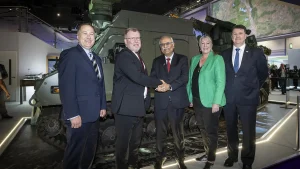
But what we’re seeing is the opportunity for that vehicle to be manufactured here. And then perhaps, and this is yet to be worked out, the intent would be for us to operate that here regionally. we’re working out how we can offer our products and services into a market where the Indian customer is crystal clear about how they want to do business.
And what we see is Make in India, which has been around for quite a long time, Atmanirbhar Bharat, But that’s a broader picture, but it has absolute defence connotations. Then we see it drill down through policy and into the DAP.
And so, what BAE Systems is doing is partnering with Indian private sector or with Indian DPSUs so that if India would like to have this kind of manufacturing know-how in-country and to be self-reliant, then this is how we can offer into that environment.
ADU. And what happens to the supply chain in this case? You have your original BAE Systems supply chain or have you also gotten a lot of Indian companies which are a part of L&T supply chain or not?
AW. So, at the moment, we’re talking about prototype vehicle in the Indian context, but it’s a vehicle which has been developed for this specific mission. Now, what we see has occurred in terms of supply chain is once you start manufacturing here, then it makes sense to evaluate the supply chain. Certain things, I think, will be hard to put into the Indian supply chain, but some things will be a no-brainer.
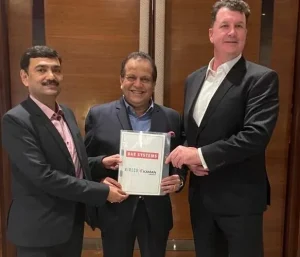 And with L&T, we can see the work that they did with the K9 Thunder from Hanwha in Korea and how they achieved incredible indigenisation rates. I would not be surprised if there’s a similar path to be taken, but those details, I think, are yet to be decided, so we can’t really go into any more on that. But certainly back on the supply chain aspect, what we did see as a consequence of, one, being in-country a very long time, we’ve got established suppliers that we relied on, for example, Kineco-Kaman on the P8 consoles. We’ve been doing that since before the M777 console, and they’re a very awarded supplier supplying those consoles into America that end up on the Boeing P8 platform. Now, we also saw with the M777 program us having an offset obligation that focused our mind on the Indian supply chain.
And with L&T, we can see the work that they did with the K9 Thunder from Hanwha in Korea and how they achieved incredible indigenisation rates. I would not be surprised if there’s a similar path to be taken, but those details, I think, are yet to be decided, so we can’t really go into any more on that. But certainly back on the supply chain aspect, what we did see as a consequence of, one, being in-country a very long time, we’ve got established suppliers that we relied on, for example, Kineco-Kaman on the P8 consoles. We’ve been doing that since before the M777 console, and they’re a very awarded supplier supplying those consoles into America that end up on the Boeing P8 platform. Now, we also saw with the M777 program us having an offset obligation that focused our mind on the Indian supply chain.
ADU. How do you plan to do it?
AW. Today, BAE Systems has almost 80 suppliers on our books, approximately 50 of them are MSMEs, and we’re quite proud of that, and we will see those suppliers continue to develop in our programs. And India presents a very compelling value proposition to a global organisation. We’re seeing quality achieved and exceeded, we’re seeing schedule achieved and exceeded, and we’re seeing very competitive cost benefit by being here.
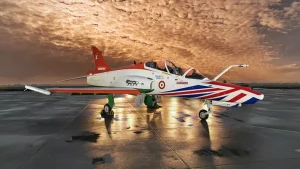 Now, as a program manager, those are the things that you’re looking for, cost, schedule, and quality, time and time again. So what we saw as a lot of activity that was generated through the M777 program, we’re going to see that continue, and we’re going to see that going on. So, in terms of what BAE Systems is doing, we’re still supporting the Hawk, we’re working on the sustainment contract for the M777s, we have simulator work which we do, we have this supply chain activity which we can see growing, and part of that supply chain activity is in fact we are utilising India’s technical services like most large companies. So, we do have some engineering work being done here in India as well, but that’s also something which I’m considering from a global perspective.
Now, as a program manager, those are the things that you’re looking for, cost, schedule, and quality, time and time again. So what we saw as a lot of activity that was generated through the M777 program, we’re going to see that continue, and we’re going to see that going on. So, in terms of what BAE Systems is doing, we’re still supporting the Hawk, we’re working on the sustainment contract for the M777s, we have simulator work which we do, we have this supply chain activity which we can see growing, and part of that supply chain activity is in fact we are utilising India’s technical services like most large companies. So, we do have some engineering work being done here in India as well, but that’s also something which I’m considering from a global perspective.
ADU. Can we, in addition to a supply chain, have a talent chain that starts with India?
AW. Absolutely as the next step or can be done alongside too. And once you start developing that sort of talent chain, particularly in a technical way, that’s when I think we can see the engineering centres begin to stand up, centres of excellence in particular specialties, whether it be systems engineering or whether it be autonomy or what have you. I think the other string to our bow that we’ve got at the moment is partnerships.
So it’s not new news that we’ve partnered with NewSpace and others along the way, and we have these arrangements in place with the different companies, but what I will say is we are working very regularly with NewSpace on how we stitch together their innovation, their sort of entrepreneurial spirit, their experience within the Indian customer environment with our long-term experience in aerospace platforms and avionics and airframes and that kind of thing, and how we can marry those two up together to provide a product and service.
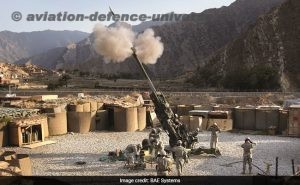 ADU. Where does BAE Systems -Mahindra partnership stand in these plans?
ADU. Where does BAE Systems -Mahindra partnership stand in these plans?
AW. So for us, Mahindra is very important, of course, not least because of the work that we’ve done on the M777. But from a BAE systems perspective, we like to look at all of the organisations and their strengths as to where we focus our partnership and our relationships.
So for L&T, you know, in this case, the right answer was, a protected, articulated and tracked protected vehicle. Sounds a lot like a combat vehicle, but it’s, you know, in military parlance, it’s technically a protected vehicle.
For HAL, you know, aerospace is where we would go to. If we went to Mahindra, we might be looking at artillery. But at the moment, we believe that in terms of the M777, those orders are complete. And we don’t see a future order coming at this point in time.
ADU. And when you speak of talent management, are you in touch with the academia in India? Are there some university tie-ups or IITs or something like that, which you’ve done?
 AW. I think there have been several conversations over the years, but nothing has come to fruition and nothing’s established today. But it is something that is in front of my mind because I was at a meeting just recently where the UK High Commission was present, the Deputy High Commissioner and some industry leaders. And we were talking about this and the way that India has an incredible amount of technical talent and they will be looking to either further their education overseas or further their education in Indian institutions. But either way, there’s going to be a tremendous demand. What we’re finding, globally, is a skills shortage in terms of the engineers and technicians that we need to deliver these complex platforms. At the same time, we’re seeing a talent pool here in India. So, if we can match those two things up, if we can tie them together with academia, even better. To me, it makes a lot of sense. And perhaps we could do it under international frameworks, like the Quad or bilateral arrangements.
AW. I think there have been several conversations over the years, but nothing has come to fruition and nothing’s established today. But it is something that is in front of my mind because I was at a meeting just recently where the UK High Commission was present, the Deputy High Commissioner and some industry leaders. And we were talking about this and the way that India has an incredible amount of technical talent and they will be looking to either further their education overseas or further their education in Indian institutions. But either way, there’s going to be a tremendous demand. What we’re finding, globally, is a skills shortage in terms of the engineers and technicians that we need to deliver these complex platforms. At the same time, we’re seeing a talent pool here in India. So, if we can match those two things up, if we can tie them together with academia, even better. To me, it makes a lot of sense. And perhaps we could do it under international frameworks, like the Quad or bilateral arrangements.
ADU. BAE Systems has a very major naval systems manufacturing capability. So why haven’t you been able to sell it to the Indian MoD?
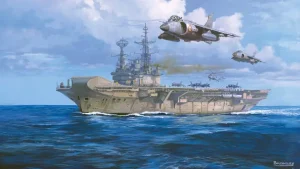
AW. Certainly in the UK, we design and manufacture surface ships and submarines. In Australia, we’re doing some design and manufacture for the Hunter-Blast Brigade program, as well as other things. In US, it’s more about surface ship sustainment than manufacture. Recently the Indian Chief of Navy talk about being totally self-reliant by 2047. And looking at the projects in terms of Indian surface ships and so forth, India’s well down the track of being able to manufacture, and design their own. I think a great example of that is the aircraft carrier and how that’s pulled together. So, we do have conversations about what we can do for Navy and we continue to look forward to collaborating with the Indian Navy and extend our expertise to them.
ADU. BAE Systems is majorly into space technology. Are you in any relationship with ISRO for anything?
AW. We’re also watching the space sector to say, how do we play in here? What can we contribute to a nation that just put a platform on the moon? But as we all know, those platforms are made up of many, many, many subsystems. And they come from all over the world. So BAE Systems has got some strong interest in space. We also have a number of sensors that we can put onto platforms. And we have a number of systems that would be useful to the war fighter. And I think what will also be interesting to see what comes out of the United States in the near future with our recent acquisition of Ball Aerospace as well, who are very big in the space sector.
India has a huge space infrastructure already up and running, and there’s been a lot of work going on. I also like to keep an eye on industry and on the SMEs to see where we can plug and play into this environment. And that goes both ways. So, if someone’s doing something in India, which I think would be really useful to the team in the UK or the team in the US, then we could fold it back out.
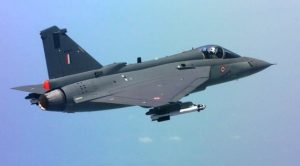 ADU. And what is the next for BAE Systems in military aviation in India?
ADU. And what is the next for BAE Systems in military aviation in India?
AW. We are providing components and systems into LCA, which we’re proud of. And through relationships with ADA and HAL, we hope to also provide some systems into the advanced medium combat aircraft and perhaps even to the twin engine deck base pilot.
ADU. What is your message for Indian industry who look up to BAE Systems as a big OEM?
AW. I think my key message is that BAE Systems stands ready to support the Indian Defence Forces in any way that we can with our products and services within the frameworks that we can operate in. So what I mean by that is the technology transfer considerations, government to government relations and all things which are everyday considerations for the defence industry for delivering the capability they want. And I think the example for that is BVS10, if we are successful in that competition.












